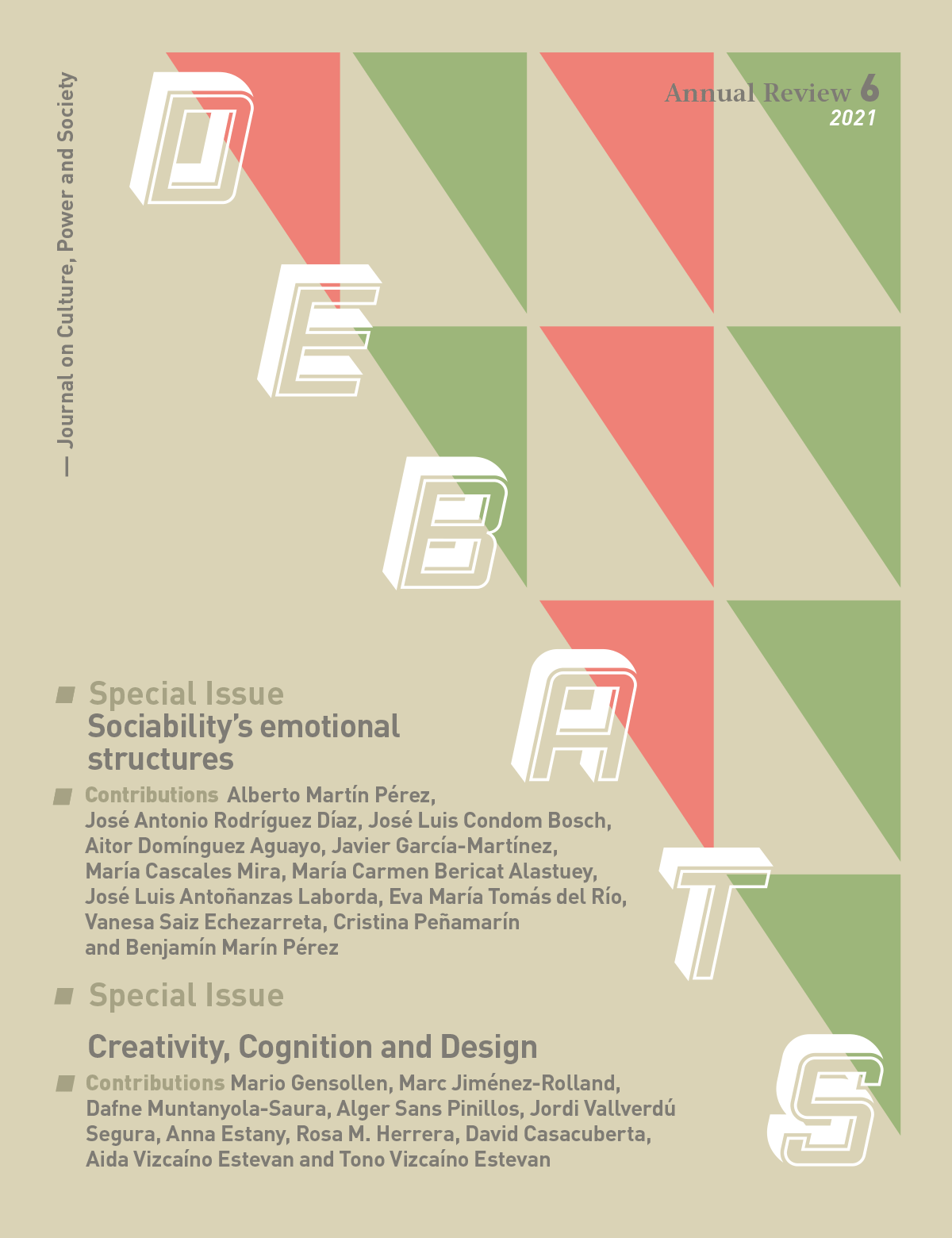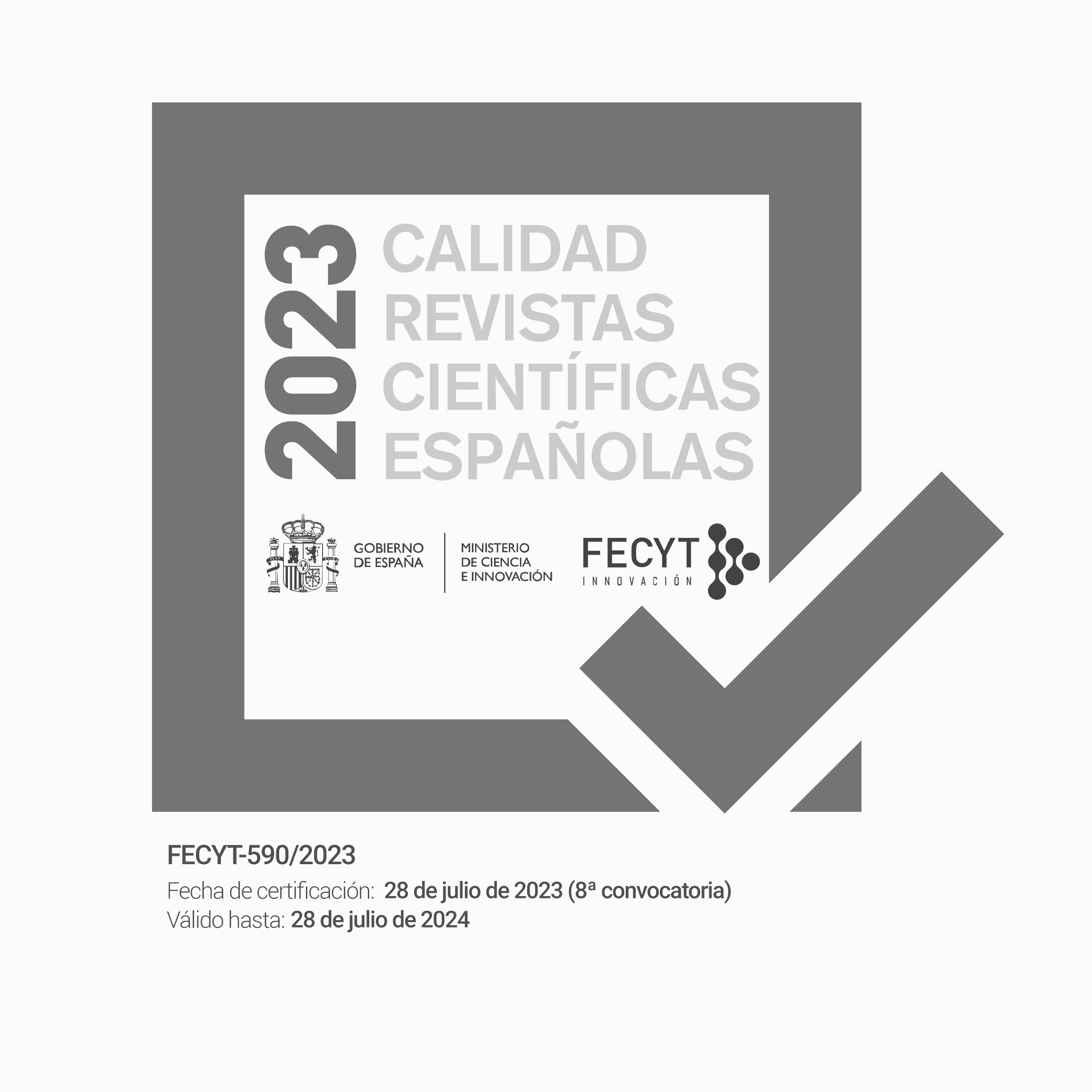Naturalist Methods in the Sociology of Creativity: The Case Against Reductionism
DOI:
https://doi.org/10.28939/iam.debats-en.2021-8Resum
The Sociology of Culture has much to say when it comes to the ever-changing general consensus on what constitutes legitimate culture and definitions of creativity. The naturalistic studies on cognition in social and cognitive sciences show this empirically (Bourdieu, 1979: Becker, 1982, 2002; Sennett, 2012; Author, 2014). Creative cognition is part of an institutional context. However, the influential culturalist branch of cognitive sociology (CCS) reduces creativity to a cognitivist psychological level (Lizardo and Strand, 2010). We start from the conjecture that the Sociology of Culture can draw on the naturalistic paradigm of cognition to explain creativity without falling into reductionist or atomist positions. The authors take the diversity of theoretical-empirical proposals into account in identifying the starting points for focusing the debate at both the macro and micro levels. The body of the article comprises a literature review which, while not exhaustive, offers a full picture of the pragmatic and integrated models of creativity. The studies analysed present inter-subjective processes of creation and the transmission of variable legitimate criteria concerning cultural consumption such as categorisations, evaluations and aesthetic judgments. The sociological perspective offers scope for strengthening critical tools for examining creativity.
Descàrregues
Referències
Becker, H. (2002). Studying the New Media. Qualitative Sociology, 25-3, 337-343.
Becker, H. (2017). Creativity is Not a Scarce Commodity. American Behavioral Scientist, 6112, 1579-88.
Berger, P. and Luckmann, T. (1988). La construcció social de la realitat. Barcelona: Herder.
Bourdieu, P. (1979). La distinction. Paris: Seuil.
Bourdieu, B. (1984). Raisons Practiques. Paris: Seuil.
Bourdieu, B. (1994). Les regles de l’art. Paris: Seuil.
Brekhus, W. H. (2015). Culture and Cognition. Patterns in the Social Construction of Reality.Cambridge UK: Polity Press.
Bunge, M. (2018). Diccionari filosòfic. Barcelona: Institut d’Estudis Catalans (IEC).
Clark, A. (2008). Supersizing The Mind. Oxford, UK: Oxford University Press.
Cicourel, A. (2002). The Interaction of Discourse, Cognition and Culture. Discourse Studies, 8 (1), 25-29.
Cifariello, F. (2017). “Creativitá musicale di consumo” in Fele, G.,Russo, M.,Cifariello, F. (Eds.) Creativitá musicali.
Narrazioni, practiche e mercato. Milano: Mimesis.
Damasio, A. (1999). The Feeling of What Happens: Body and Emotion in the Making of Consciousness: New York:
Harcourt Brace.
DelVal, F. (2017) Rockeros insurgentes, moderno scomplacientes: un análisis sociológico del rock en la Transición (1975-
. Madrid: Fundación SGAE.
DeNora, T. (2014). Making Sense of Reality: Culture and Perception in Everyday Life. London: Sage.
Dennett, D. (1995). Darwin’s dangerous idea. New York: Simon & Schuster.
DiMaggio, P. (1987). Classification in Art. American Sociological Review, 52, 4, 440-455.
Dreyfus, H. (1996). The current relevance of Merleau-Ponty’s phenomenology of embodiment. The Electronic Journal
of Analytic Philosophy, 4.
Du Gay P (1997) Doing Cultural Studies: The Story of the Sony Walkman. London: Sage/Open University Press.
Eagleton, T. (2000). The idea of culture.London: Blackwell Publishing.
Fele, G. (2016). Il paradosso del gusto. Società mutamento politica, 7 (14), 151-174.
Feyerabend. P. (1975) Against Method. New York: Verso Books.
Feyerabend, P. (1987). Creativity: A Dangerous Myth. Critical Inquiry, 13(4), 700-711.
Frith, S. (1986). Art Versus Technology: The strange case of popular music. Media, Culture & Society, 8, 263–279.
Fourcade, M. (2012). The Vile and the Noble: On the Relation between Natural and Social Classifications in the
French Wine World. Sociological Quarterly, 53 (4), 524-545.
Gamboni,D. (2007). La destrucción del arte. Icono clasia y vandalismo desde la Revolución Francesa. Madrid: Cátedra.
Gallese, V., C. Keysers, and G. Rizzolatti (2004). A unifying view of the basis of social cognition, in Trends in Cognitive
Science, 8, 396–403.
Gibbs, R. (2006). Embodiment and Cognitive Science. New York, NY: Cambridge University Press.
Green, B. (2016). I Always Remember That Moment’: Peak Music Experiences as Epiphanies. Sociology, 50(2), 333–348.
Heinich, N. (1999) La sociologie et les publics de l’art in Moulin, R. (op.cit)
Hennion, A. (2005). Pragmatics of Taste. In Jacobs M. and Hanranhan, N. The Blackwell Companion to the Sociology
of Culture, Oxford, Blackwell, pp.131-144.
Herrera-Usagre, M. (2011). El consumo cultural en España. Una aproximación al análisis de la estratificación social
de los consumos culturales y sus dificultades metodológicas. Empíria, Revista de Metodología de Ciencias Sociales,
, 141-172.
Joas, H. (1996). The creativity of action. Chicago: University of Chicago Press.
Johnson, C; Dowd, T. and Ridgeway, C. (2006). Legitimacy as a Social Process. Annual Review of Sociology, 32, 53-78.
Jacobi, D. and Luckerhoff, J. (2012). Looking for non-publics. Presses de l’Université du Québec.
Kirsh, D. (2009). Projection, Problem Space and Anchoring. In N. A. Taatgen and H. van Rijn (Eds.), Proceedings of the
st Annual Conference of the Cognitive Science Society (pp. 2310-2315). Austin, Texas: Cognitive Science Society.
Lamont, M. (2010). Looking back at Bourdieu. In E. B. Silva, and A. Warde (Eds.), Cultural Analysis and Bourdieu’s
Legacy: Settling accounts and developing alternatives (pp. 128–141).London: Routledge.
Latour, B. (1986).Visualisation and Cognition: Thinking with Eyes and Hands. In H. Kuklick (ed.) Knowledge and
Society Studies in the Sociology of Culture Past and Present, Jai Press 6: 1-40.
Lena, J. C. and Peterson, R. A. (2008). Classification as Culture: Types and Trajectories of Music Genders. American
Sociological Review, 73 (5), 697-718.
Lieberman, K. (2013). Studies in Ethno-methodology: Studies of the in vivo organization of sense. State University of
New York Press.
Lipovetsky, G. (2007). Le bonheur paradoxal. Essaisur la société d’hyper consommatiom. Paris: Gallimard.
Lipovetsky, G., and Serroy, J. (2015). La estetización del mundo. Barcelona: Anagrama.
Lizardo, O. (2004). “Mirror Neurons,” Collective Objects and the Problem of Transmission: Reconsidering Stephen
Turner’s Critique of Practice Theory.Journal for the Theory of Social Behaviour, (37)3, 219-350.
Lizardo, O. (2004). The Cognitive Origins of Bourdieu’s Habitus. Journal for the Theory of Social Behaviour, 34 4, 375-401.
Lizardo, O., and Strand, M. (2010) Skills, Toolkits, Contexts and Institutions: Clarifying the relationship between
different approaches to cognition in Cultural Sociology. Poetics, 38, 204–227.
López Sintas, J.L.; Filimon, N., Cebollada, A. Filimon , N., and Gharhaman, A. (2014) Music Access Patterns: A social
interpretation.Poetics 46, 56–74.
Mas, X. (2017). La música clàssica contemporània: una perspectiva etnomusicològica. Sociology PhD thesis, Universitat
de València.
Merton, R.K. (1945). Sociological Theory. American Journal of Sociology, 50 6, 462–73.
Moschetta, P.H., and Vieira, J.S. (2018). “Music consumption in the streaming era: Music curation practices in
Spotify”, KISMIF Congress 2018: Gender Differences, Identities and DIY Cultures Universidad de Porto, 2nd-3rd July.
Moulin, R. (Ed.) (1999).Sociologie de l’art. Paris: L’Harmattan.
Muntanyola-Saura, D. (2012). La decisió artística i les seves condicions de producció: parlant amb un equip de
rodatge. Athenea Digital,12(2): 89-109.
Muntanyola-Saura, D. (2014). How multi-modality shapes creative choice in dance. Revista Española de Sociología,
(3), 563-582.
Muntanyola-Saura, D. (2016). La musicalidad como parte de la cognición distribuida en danza. Methaodos. Revista
de ciencias sociales, 4(1), 163-175.
Premack, D. (2004). Is Language the Key to Human Intelligence? Science 303, 318-320.
Ramachandran,Vilanayur S., and Blackeslee, S. (1999). Phantoms in the Brain: Probing the Mysteries of the Human
Mind. NewYork: William Morrow.
Regev, M. (2013). Pop-rock Music. Aesthetic Cosmopolitanism in Late Modernity. Cambridge UP.
Rendueles, C. (2013). Sociofobia. El cambiopolítico en la era de la utopía digital. Madrid: Capitán Swing.
Rosenblum, B. (1999).Artists, Alienation and the Market in Moulin (op cit.).
Searle, J. (2004). Mind. Oxford University Press.
Sennet, R. (2012). Together. London: Penguin Books.
Schütz, A. (1972). Collected Papers vol. I. The Netherlands: Springer.
Stuart Hall, E. (2007). Richard Hoggart, The Uses of Literacy and The Cultural Turn. International Journal of Cultural
Studies, 10(1), 39–49.
Stuart Hall, E. and Jefferson, T. (eds) (1998 [1975]). Resistance Through Rituals: Youth Sub-cultures in Post-War Britain.
London New York: Routledge.
Teil, G. (2004). De la coupe aux lèvres. Pratiques de la perception et mise en marche des vins de qualité. Toulouse: Éditions
Octarès.
Vandenberg, T. et al. (2018). “Taste patterns of the ‘illegitimate’ cultural consumer”, KISMIF Congress 2018: Gender
Differences, Identities and DIY Cultures Universidad de Porto, 2nd-3rd July.
Vlegels, J. and Lievens, T. (2017). Music classification, genres, and taste patterns: A ground-up network analysis on
the clustering of artist preferences, Poetics 60, 76–89.
Williams, R. (1992 [1958]). Culture and Society. London: The Hogarth Press.
Descàrregues
Publicades
Com citar
Número
Secció
Llicència
Sense perjudici del que disposa l'article 52 de la Llei 22/1987 d'11 de novembre de Propietat Intel·lectual, BOE del 17 de novembre de 1987, i conforme a aquest, els/les autors o autores cedeix/en a títol gratuït els seus drets d'edició, publicació, distribució i venda sobre l'article, per tal que siga publicat a Debats. Revista sobre cultura, poder i societat.
Debats. Revista de cultura, poder i societat es publica sota el sistema de llicències Creative Commons segons la modalitat “Reconeixement – NoComercial (by-nc): Es permet la generació d’obres derivades sempre que no se’n faça un ús comercial. Tampoc no es pot fer servir l’obra original amb finalitats comercials”.
Així, quan l’autor/a envia la seva col·laboració, accepta explícitament aquesta cessió de drets d’edició i de publicació. Igualment autoritza Debats. Revista de cultura, poder i societat la inclusió del seu treball en un fascicle de la revista perquè es puga distribuir i vendre.











